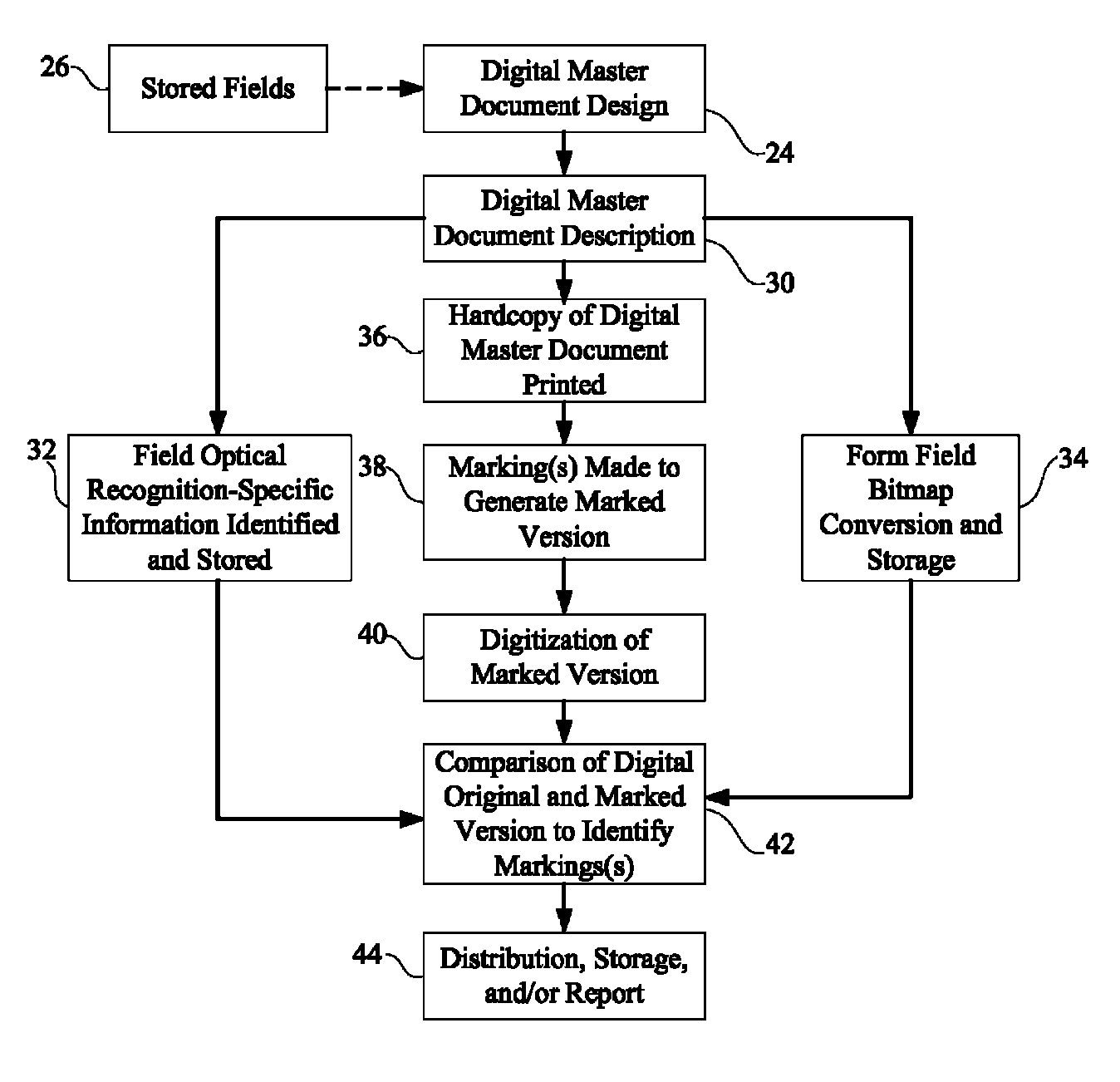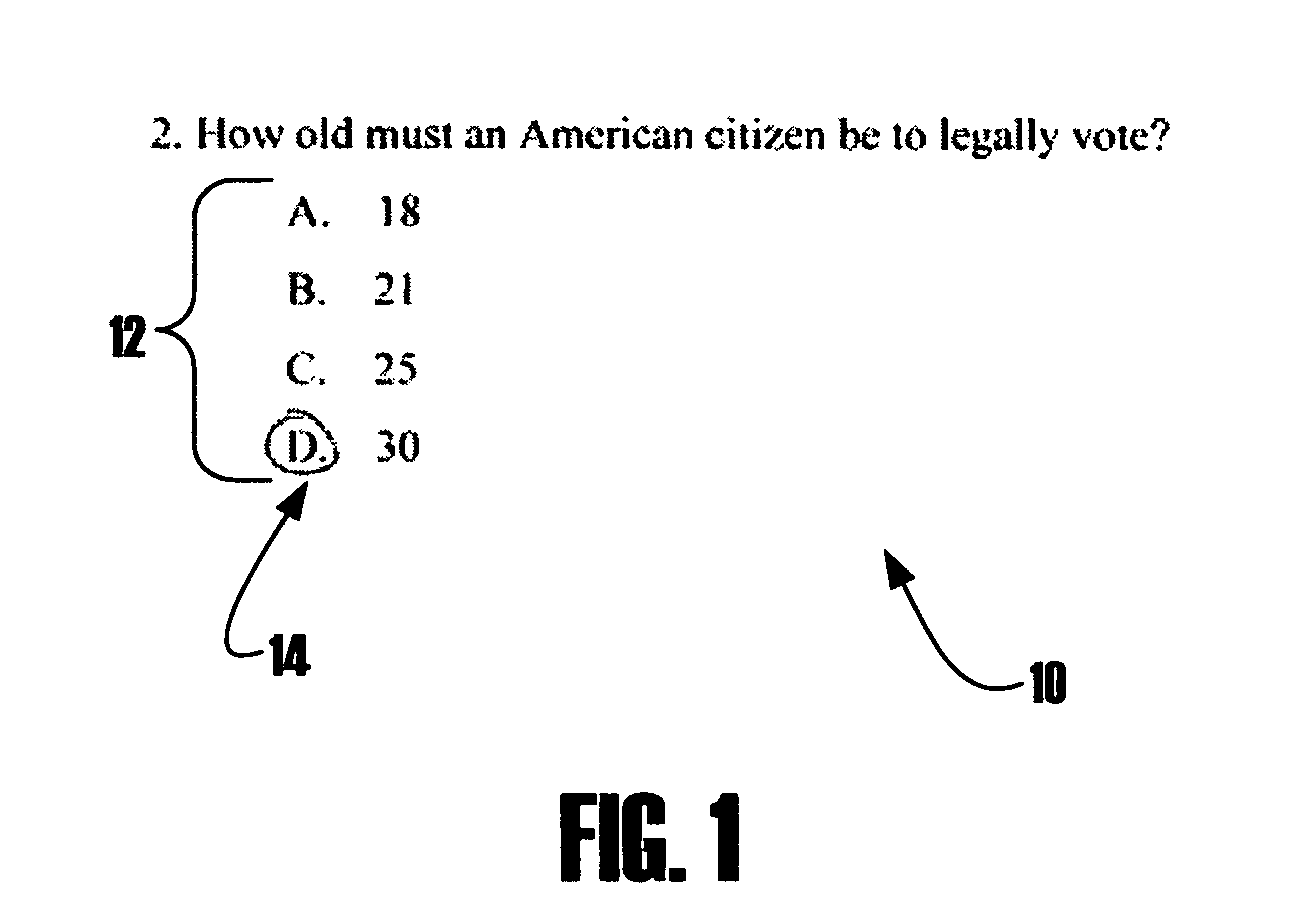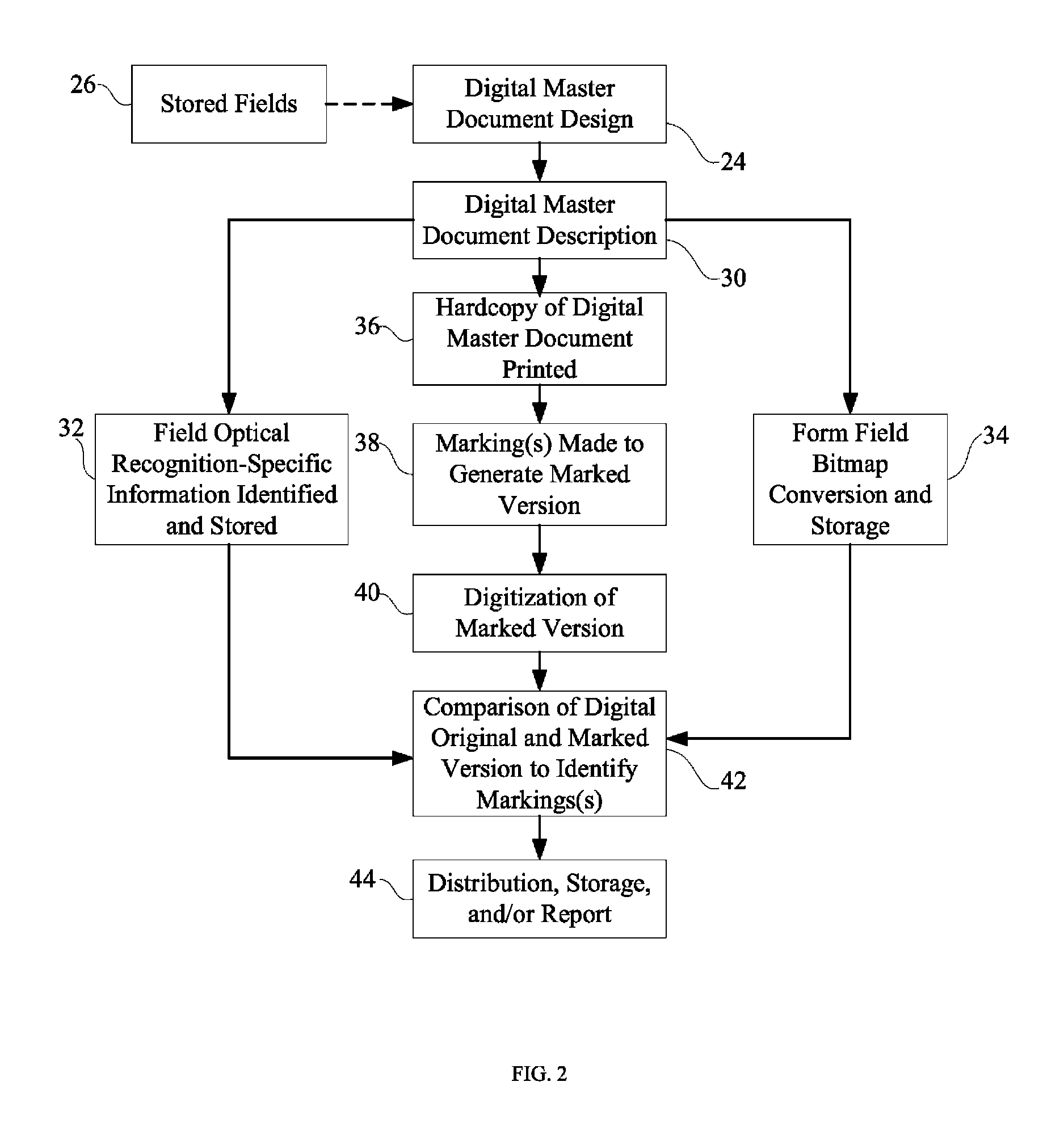Methods for identifying marks using a digital master document and scanned image enhancement
a digital master document and enhancement technology, applied in the field of improving the optical recognition of marks made on documents, can solve the problems of increasing the failure rate of omr and ocr more often than desired, degeneration or distortion, and reducing the efficiency and effective use of content extraction, so as to reduce errors and reduce image quality degeneration
- Summary
- Abstract
- Description
- Claims
- Application Information
AI Technical Summary
Benefits of technology
Problems solved by technology
Method used
Image
Examples
Embodiment Construction
[0026]The present inventions now will be described more fully hereinafter with reference to the accompanying drawings, in which some, but not all embodiments of the invention are shown. Indeed, these inventions may be embodied in many different forms and should not be construed as limited to the embodiments set forth herein; rather, these embodiments are provided so that this disclosure will satisfy applicable legal requirements. Like numbers refer to like elements throughout.
[0027]The present invention will be discussed herein with reference to an illustrative example of the recognition of an answer mark for a multiple choice test question. However, it should be appreciated that the methods of the present invention are applicable to the recognition of a marking made on any document. Therefore, the examples discussed in detail herein are intended only as non-limiting illustrative examples, as the methods of the present invention may be used to effect mark recognition on virtually an...
PUM
 Login to View More
Login to View More Abstract
Description
Claims
Application Information
 Login to View More
Login to View More - R&D
- Intellectual Property
- Life Sciences
- Materials
- Tech Scout
- Unparalleled Data Quality
- Higher Quality Content
- 60% Fewer Hallucinations
Browse by: Latest US Patents, China's latest patents, Technical Efficacy Thesaurus, Application Domain, Technology Topic, Popular Technical Reports.
© 2025 PatSnap. All rights reserved.Legal|Privacy policy|Modern Slavery Act Transparency Statement|Sitemap|About US| Contact US: help@patsnap.com



